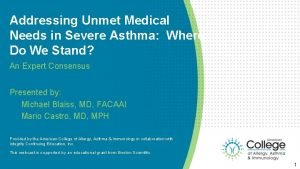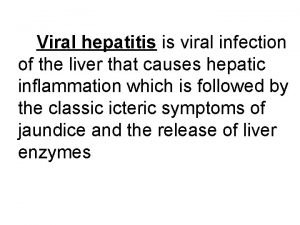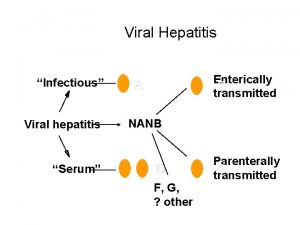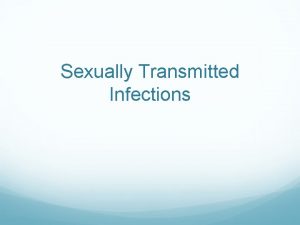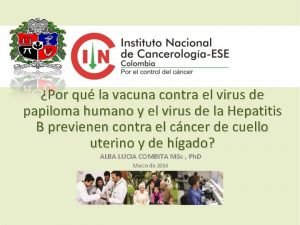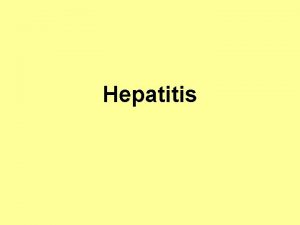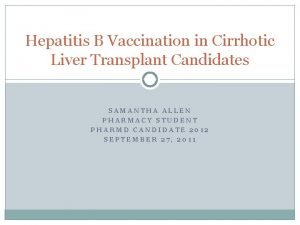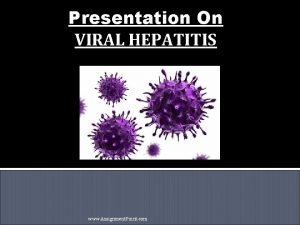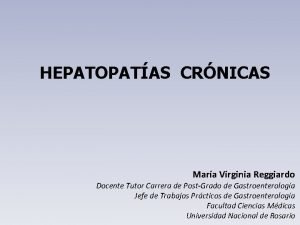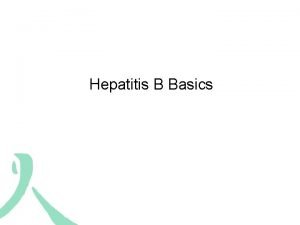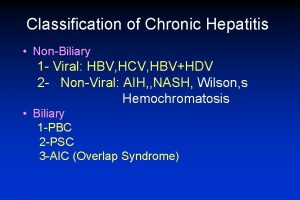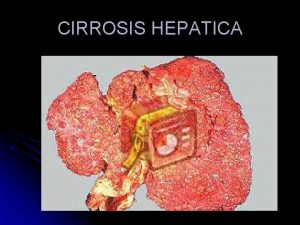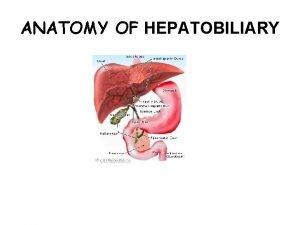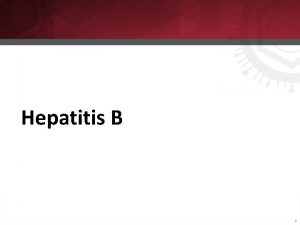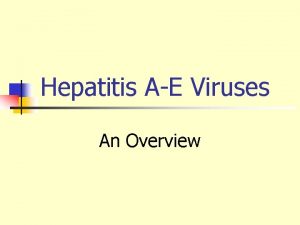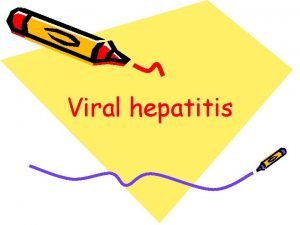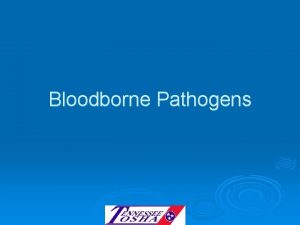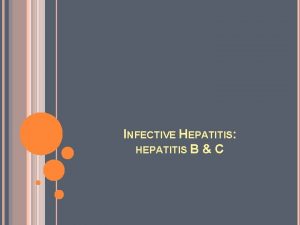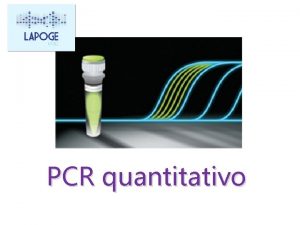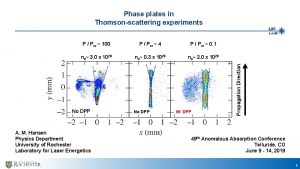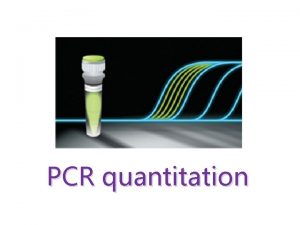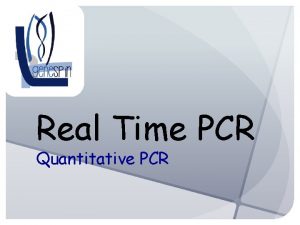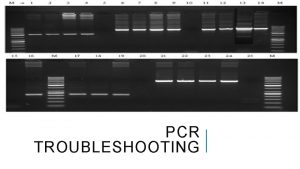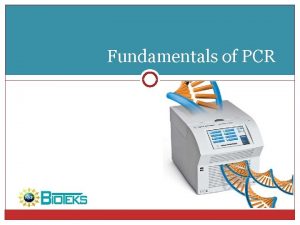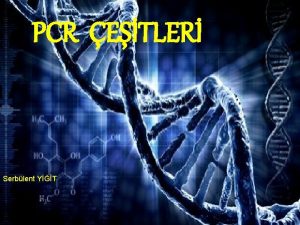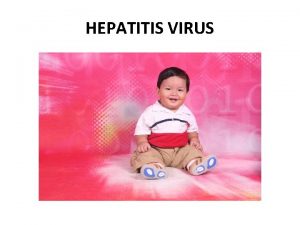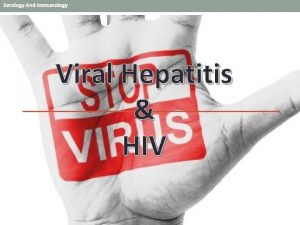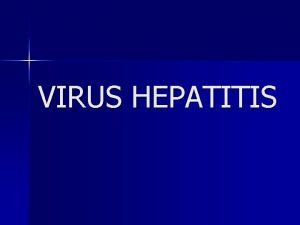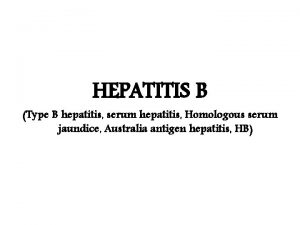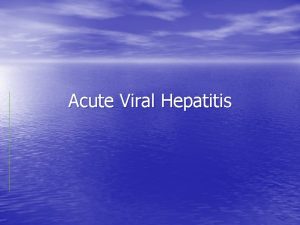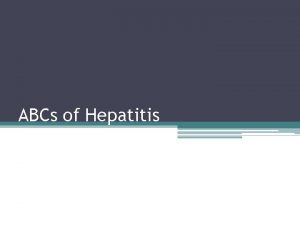Unmet Need for Hepatitis C PCR Testing New
























- Slides: 24

Unmet Need for Hepatitis C PCR Testing, New York City, 2009 -2010 Emily Mc. Gibbon, MPH June 2011 CSTE Annual Conference

Hepatitis C (HCV) – the basics • Bloodborne virus • Main modes of transmission: • • Injection drug use Transfusion before 1992 Perinatal transmission rate = 6% Sexual transmission low; conflicting data in literature

HCV – the basics cont’d • No test for acute infection • Usually leads to chronic infection • In 10 -15% infection spontaneously resolves • Patients asymptomatic or have mild illness for years • 15 -20% with chronic HCV develop liver cirrhosis

HCV antibody test • Screening test • Positive EIA (with high signal-to-cutoff ratio) or RIBA reportable to NYC DOHMH • If positive, could indicate: • Either acute or chronic infection • Resolved infection • False positive • If resolved infection, antibody positive for life but does not confer immunity to reinfection

HCV NAT test • Positive Nucleic Acid Test (NAT), e. g. PCR, reportable to NYC DOHMH • Indicates current HCV infection • Fewer labs perform this test • $$$ compared to antibody test

Patients with positive HCV antibody need PCR test • About 10 -15% of antibody-positive patients are not infected • Without PCR, patients do not know infection status • Unclear what clinicians are telling patients when antibody positive and PCR not done

HCV in New York City • About 10, 000 patients newly reported per year 1 • High volume and limited staff • No routine investigation (unless acute) • Limited data on epi of HCV in NYC 1) http: //www. nyc. gov/html/doh/downloads/pdf/cd/cd-hepabc-surveillance-report-08 -09. pdf

Enhanced HCV surveillance methods • On-going enhanced surveillance – July 2009 • Sample 20 patients every 2 months • Newly reported • NYC residents or unknown address • DOB known • Physician questionnaire (fax or phone) • • • Demographics Risk factors Reasons for testing Treatment, hepatitis A and B vaccination Counseling on transmission and alcohol use

Laboratory investigation • MD’s interpretation of lab results • Copy of most recent lab results • If PCR not done • • Ask why not Request PCR be ordered (letter) Send guidelines, explain why PCR is needed Track PCR results prospectively

Results Total sampled (Diagnosed April 2009 November 2010) N=200 Did not meet inclusion criteria N=14 Data error N=11 Resides outside NYC N=3 Met inclusion criteria N=186 Completion rate = 186/186 (100%)

Lab status Met inclusion criteria N=186 PCR negative N=36 (19. 4%) PCR positive on initial report N=77 (41. 4%) PCR positive after DOHMH follow-up N=12 (6. 4%) PCR not done N=61 (32. 8%)

PCR not done – facilities seen N=61 N % Medical facility Detox Jail 22 21 7 36. 1 34. 4 11. 5 Other 9 14. 8 Unknown 2 3. 3

Reasons PCR not done N=61 N % Patient did not return for follow-up 24 39. 4 Facility does not do PCR testing 18 29. 5 Patient referred to specialty clinic for followup 5 8. 2 Patient died, incapacitated 3 4. 9 Patient does not have insurance/cannot pay for test 1 1. 6 PCR test inconclusive 1 1. 6 Unknown 9 14. 7

Challenges to enhanced surveillance Not typical patient population • Physician who answered questionnaire may not know much about patient • High proportion without PCR • • • Patients seen in detox/jails • May not do PCR testing Patients lost to follow-up PCR negative not reportable

Patient #1 • Tested antibody positive while in detox • Facility does not do PCR testing • Referred patient to specialist for follow-up (standard practice) • No positive PCR ever reported

Patient #2 • 23 year-old student, tested antibody positive as screening for school • Only risk factor is immigrating from Ukraine (high-prevalence country) in 1993 • MD told him he had HCV • Patient did not go back to initial MD as far as we know • No PCR as far as we can tell

Patient #3 • 5 reports of antibody positive results from different detox facilities • No PCR as far as we can tell

Patient #4 • Antibody positive this year, reported to us for first time • Had prior positive antibody test in 2005, tested PCR negative in 2006 • Likely had HCV in past but resolved infection • Should not have been retested for antibody!

Conclusions • If PCR not done: • Infection status for patients often remains unknown • Difficult to assess patients’ needs • Difficult to know when to stop investigating • Of 200 sampled: • 36 were PCR negative • Meet case definition for chronic/resolved HCV • Probably not infected

Health Department response • Interview multiple providers if learn about another MD who may know patient better • Developed clinical bulletin about HCV diagnosis and care, emphasizing need for PCR • Started additional follow-up for patients where PCR not done


PCR follow-up project Select patients whose enhanced surveillance investigations were closed >9 months prior Patients where PCR not done (N=61) Contact all known clinicians Was PCR ever done? Started project Feb 23, 2011 – 37 cases to follow up on

Next steps? • Continue educating providers about importance of PCR testing • Clinical staff • Detox, jail staff: social workers, counselors • Lobby to make PCR test more available/affordable for detox and jails

Acknowledgements • • • Ellen Gee Duyang Kim Bianca Malcolm Grace Malonga Meredith Rossi Allan Uribe Tim Wen Janette Yung Sharon Balter Jennifer Baumgartner Katherine Bornschlegel
 Unmet financial need
Unmet financial need Unmet needs in severe asthma
Unmet needs in severe asthma Hepatitis b markers interpretation
Hepatitis b markers interpretation Hepatitis e
Hepatitis e Window period of hepatitis b
Window period of hepatitis b Gonorrhea
Gonorrhea What stds are cureable
What stds are cureable Vph
Vph Hepatitis alimentos permitidos y no permitidos
Hepatitis alimentos permitidos y no permitidos Hepatitis c symptoms in men
Hepatitis c symptoms in men Hepatitis b vaccine series adults
Hepatitis b vaccine series adults Hepatitis d
Hepatitis d Bare area of liver
Bare area of liver Colestasis
Colestasis Hepatitis b is a silent killer
Hepatitis b is a silent killer Classification of chronic hepatitis
Classification of chronic hepatitis Grados de encefalopatia hepatica
Grados de encefalopatia hepatica Hepar topography
Hepar topography Infectious canine hepatitis in dogs
Infectious canine hepatitis in dogs Hepatitis b panel
Hepatitis b panel Hbv
Hbv Hep b mode of transmission
Hep b mode of transmission Infectious canine hepatitis in dogs
Infectious canine hepatitis in dogs Hepatomogaly
Hepatomogaly Hepatitis a incubation period
Hepatitis a incubation period

